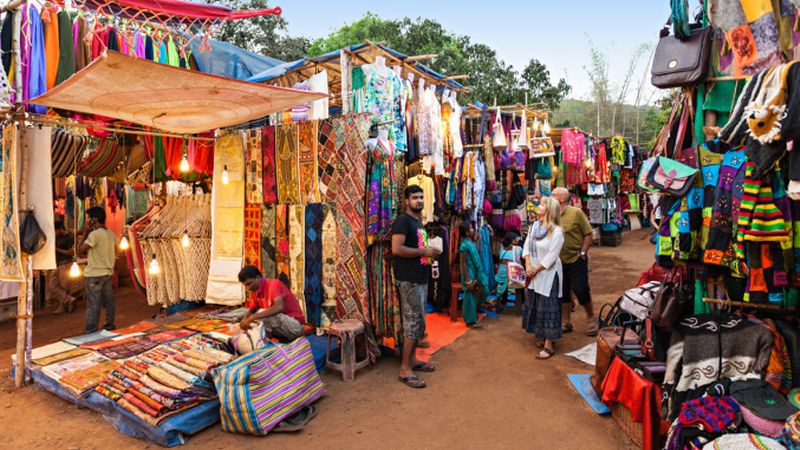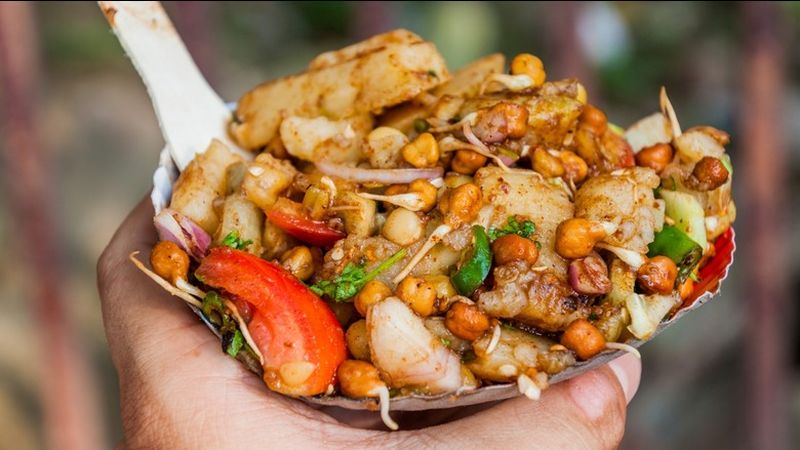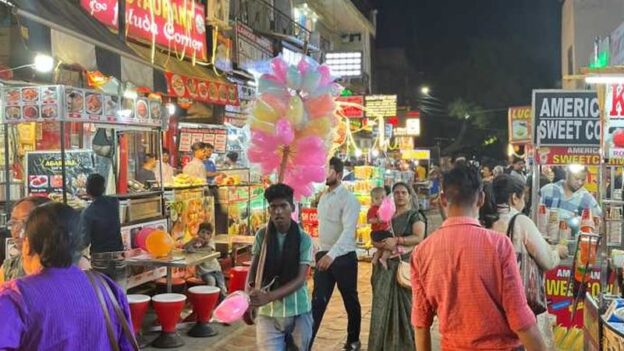Indian cuisine is renowned for its vibrant flavors, rich spices, and diverse regional specialties. One of the best ways to experience the true essence of Indian culinary delights is by indulging in the street food found in bustling Indian bazaars. These vibrant marketplaces offer a sensory feast, where traditional recipes and local ingredients come together to create mouthwatering street food. In this article, we embark on a culinary adventure through Indian bazaars, exploring the unique flavors, popular dishes, and fascinating history behind these beloved street food delicacies.
Exploring Indian Bazaars

Indian bazaars, also known as marketplaces or bazars, are vibrant hubs of commerce, culture, and gastronomy. These bustling markets can be found in cities and towns across India, each with its distinct charm and character. From the narrow lanes of Old Delhi’s Chandni Chowk to the bustling streets of Mumbai’s Chowpatty Beach, Indian bazaars offer a mesmerizing experience for food enthusiasts.
The Cultural Significance of Indian Bazaars
Indian bazaars are not just places to buy goods; they are deeply ingrained in the country’s cultural fabric. These marketplaces have existed for centuries, serving as vital social and economic hubs. The bazaars offer an opportunity to witness the diverse traditions, languages, and customs of the local communities. The streets are alive with the aromas of spices, sizzling pans, and the vibrant chatter of vendors and visitors.
One unique aspect of Indian bazaars is the concept of communal dining. Street food stalls and carts often have shared seating areas where people from different walks of life come together to enjoy a meal. This communal dining experience fosters a sense of unity and showcases the spirit of togetherness that is deeply ingrained in Indian culture.
The Fascinating History of Indian Street Food

Indian street food has a long and fascinating history. Street food culture in India dates back centuries, with influences from various culinary traditions, including Mughlai, South Indian, and regional cuisines. The evolution of Indian street food is closely tied to the cultural exchange and migration of different communities throughout history.
Fusion of Flavors and Culinary Influences
Indian street food is a result of culinary fusion, blending flavors, techniques, and ingredients from different regions and communities. For example, the popular snack “Samosa” is believed to have originated in Central Asia and was introduced to India by traders. Over time, it adapted to Indian tastes and evolved into a delicious fried pastry filled with spiced potatoes, peas, and sometimes minced meat.
Similarly, the iconic “Pav Bhaji” found in the streets of Mumbai showcases the influence of Portuguese cuisine. The dish consists of a buttered and toasted bread roll served with a spiced vegetable curry. The Portuguese introduced bread to India, and the locals creatively incorporated it into their street food culture.
Chaat: The Flavorful Street Snacks

Chaat, a category of savory street snacks, is a highlight of Indian street food. Bursting with flavors, chaat dishes are known for their sweet, tangy, and spicy taste profiles. From the crisp “Pani Puri” to the savory “Dahi Puri,” chaat offers a delightful explosion of textures and flavors.
Chaat Varieties and Regional Specialties
Chaat comes in various forms across India, each with its unique variations and regional specialties. In Delhi, you can savor the iconic “Aloo Tikki,” a potato patty served with a medley of chutneys and garnished with chopped onions and fresh coriander. The combination of crispy tikki, tangy chutneys, and the freshness of the garnishes creates a burst of flavors in every bite.
Moving towards the western part of India, Mumbai is famous for its street food culture, and “Pav Bhaji” takes center stage. It is a delightful combination of a buttered and toasted bread roll (pav) served with a flavorful and spicy mixed vegetable curry (bhaji). The dish is cooked on a large griddle and is accompanied by chopped onions, lemon wedges, and a dollop of butter. Pav Bhaji is a hearty street food option that satisfies both the palate and the appetite.
In Kolkata, “Puchka” is a popular street food, known as “Golgappa” in other parts of India. It consists of crispy puris filled with a tangy tamarind water, spicy mashed potato filling, and a medley of spices. The explosion of flavors and textures with each bite makes Puchka a must-try street food delight.
The garnishes play a significant role in enhancing the flavors of chaat. Sev (crunchy chickpea noodles), chopped onions, fresh coriander, yogurt, and a variety of chutneys are commonly used to add layers of taste and texture to these tantalizing snacks. Each region and street food stall may have its signature combination of garnishes, adding a unique touch to the chaat experience.
Kebabs and Tandoori Delights

Indian street food is incomplete without the mention of kebabs and tandoori delicacies. Grilled over open flames or in traditional clay ovens (tandoors), these dishes boast smoky flavors and succulent textures that are hard to resist.
Kebab Varieties and Grilled Perfection
Seekh Kebabs, made from minced meat seasoned with spices and cooked on skewers, are a popular street food delight. These succulent kebabs are often made with lamb or chicken and are grilled to perfection, resulting in a smoky flavor and tender texture. Seekh kebabs are typically enjoyed with mint chutney and freshly baked bread.
“Chicken Tikka” is another beloved street food dish that showcases the art of marination and grilling. Boneless chicken pieces are marinated in a mixture of yogurt and spices, including ginger, garlic, and a blend of aromatic spices. The marinated chicken is then skewered and cooked in the tandoor, resulting in juicy and flavorful chicken tikka. It is often served with mint chutney and accompanied by naan bread or rice.
Tandoori specialties like “Tandoori Naan” (oven-baked bread) and “Tandoori Chicken” (marinated chicken cooked in the tandoor) are also popular street food items. Tandoori Naan, with its soft texture and slightly charred edges, is the perfect accompaniment to various street food dishes. Tandoori Chicken, marinated in a blend of spices and yogurt, is cooked in the tandoor, imparting a smoky and succulent flavor.
Unveiling the world of Indian street food in bustling bazaars takes you on a flavorful journey. From the explosion of flavors in chaat dishes like Pani Puri and Aloo Tikki to the smoky perfection of grilled kebabs and tandoori specialties like Seekh Kebabs and Chicken Tikka, Indian street food never fails to tantalize the taste buds. Each region and bazaar in India has its own unique street food specialties, reflecting the diverse culinary traditions of the country. So, immerse yourself in the vibrant streets of Indian bazaars, indulge in the street food delights, and savor the rich tapestry of flavors that make Indian street food an unforgettable culinary experience.

